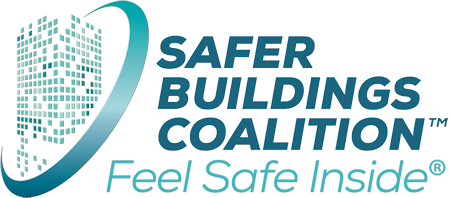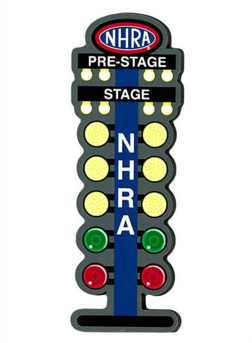From the Chief’s Corner: In Order to Win, You Cannot Jump the Start...
 Chief Alan Perdue (Ret.), CFO, FM, Chief Alan Perdue (Ret.), CFO, FM,
Executive Director – Safer Buildings Coalition Posted on July 29, 2021
A few days ago, the National Institute for Certification in Engineering Technologies (NICET) launched the first of four tests within their In-Building Public Safety Communications (IB-PSC) certification program that includes Technician Level I, Level II, Level III and Designer. Model codes and standards provide a means for the AHJ to require certification of in-building system training by an approved organization or approved school for installation and design personnel. The new NICET IB-PSC certification program can meet those requirements. When I read the announcement, I reflected on my experience as an authority having jurisdiction (AHJ) and the basic principle we were taught that to require something within your jurisdiction, it must readily be available in the marketplace. One simple but thought-provoking question we often ask ourselves at the Coalition when discussing outcomes is this; “What Does Winning Look Like”. As I thought about that question as it relates to the NICET IB-PSC certification program and AHJ’s requiring it within their jurisdictions the image of a Christmas tree suddenly popped into my mind. Now, I am not one of those people who gets all into that “Christmas in July” mode that a lot of people celebrate. I am talking about a different Christmas tree; it is that tall electronic device commonly referred to as a Christmas tree that is used in the sport of drag racing. It is a device that contains a series of lights that is used to prepare and start the race. Now, I know you thinking, what is the correlation between the NICET certification program, the AHJ and the drag racing Christmas tree? Well to help understand the connection it starts with having a basic understanding of the purpose of the individual lights on that drag racing Christmas tree.
Those four-tenths of a second between the amber lights flashing and the activation of the green light is the most critical time for the drivers. It is imperative that they patiently wait for the activation of the green light for them to legally hit the gas and run the race. If either driver leaves the starting line too soon, the dreaded red light at the bottom of the tree is activated and the driver is disqualified thereby losing the race they worked so hard to run. Just as the electronic Christmas tree clearly identifies the right time to institute certain phases related to a race, so to must an AHJ identify the “right time” to begin requiring designers and installers of public safety Emergency Responder Communication Enhancement Systems (ERCES) to possess the NICET IB-PSC certification within their respective jurisdictions. One key aspect related to the launch of the NICET IB-PSC program is that they announced the launch of test one (Level I Technician) of the four certifications contained within their overall program. It is kind of like the pre-stage light beam that lets the driver know they are within 7 inches of the starting line except here it is letting the AHJ’s know that there is more to come. As the next three phases of the program (Designer, Level II Technician & Level III Technician) are released, think of that time as the anticipation period the driver goes through between the three amber lights flashing and the activation of the green light. Of course, it will certainly take more than four-tenths of a second for the remaining three certification test to be released, but they are in the works. Another equally important part of the certification process one must keep in mind is the fact that it will take time for those in the industry seeking certification to prepare for and take the respective test(s) and receive their certification(s). What does this mean for the AHJ? It is time to prepare for, not start the race or in this case require certification quite yet. However, now’s a great time to familiarize yourself with the overall certification program and begin discussing what level or levels you may require as minimum qualifications as evidence of proficiency before someone may perform work related to an ERCES deployment. As AHJ’s develop specific requirements related to their certification requirements, it is important to note that every person who may touch or perform a specific portion of the ERCES installation may not be required to have certification and be on the job site. Often, that responsibility is to be held by key individuals within the design and installation organization. AHJ’s may look to other related certification requirements such as those they utilize for individuals involved in the fire sprinkler and fire alarm industry. Remember, all of us are on a journey of improving in-building communications for the benefit of public safety and the public’s safety. Implementing requirements too soon certainly does not help with that goal if compliance cannot yet be accomplished. Our opportunities to win the race tomorrow have been developed by the actions of today. But then again, just like in racing none of that will matter if you “jump the green light”.
|

 As the drivers bring their cars to the starting line, there are several stages that must be completed before the actual race gets underway. First, the drivers bring their cars to what is called the first light beam, known as the pre-stage beam that indicates that the vehicle is about 7 inches from the starting line. Next, the driver moves the vehicle into what is called the stage beam, indicating the front tires are exactly on the starting line and the vehicle is fully staged and ready to race. Once both vehicles for a specific race are fully staged, the race starter will activate the Christmas tree at which time the three amber lights flash simultaneously followed by four-tenths of a second and then the green light flashes signaling the start of the race.
As the drivers bring their cars to the starting line, there are several stages that must be completed before the actual race gets underway. First, the drivers bring their cars to what is called the first light beam, known as the pre-stage beam that indicates that the vehicle is about 7 inches from the starting line. Next, the driver moves the vehicle into what is called the stage beam, indicating the front tires are exactly on the starting line and the vehicle is fully staged and ready to race. Once both vehicles for a specific race are fully staged, the race starter will activate the Christmas tree at which time the three amber lights flash simultaneously followed by four-tenths of a second and then the green light flashes signaling the start of the race.